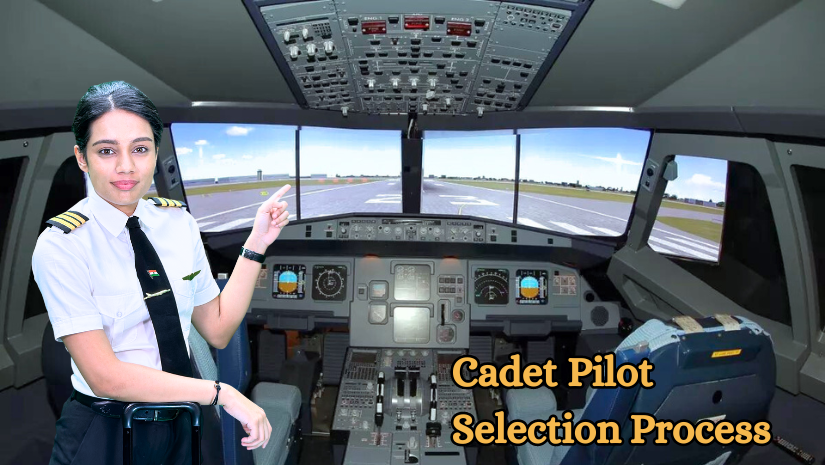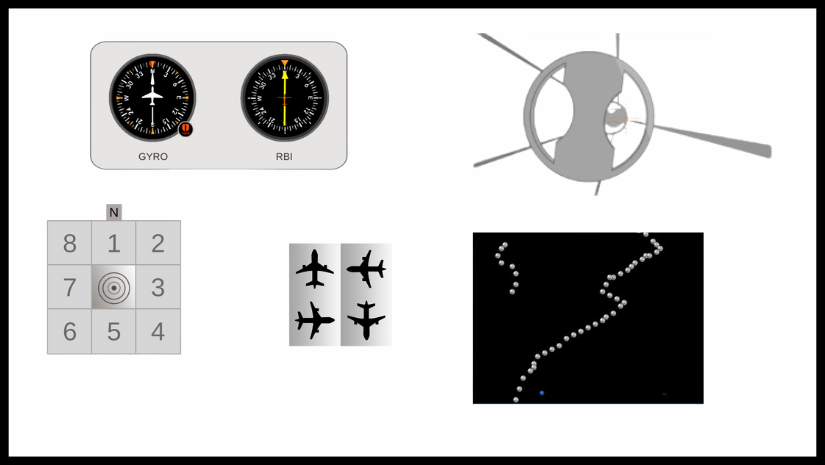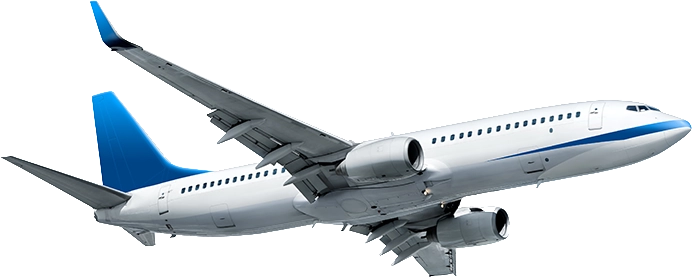Cadet Pilot Program – Course, Eligibility, Recruitment & Selection.
What is the Cadet Pilot?
Airlines have come up with a cadet pilot program. Airlines initially conduct several tests to take candidates into the program. The airline then designates the candidate as an ab initio cadet. Then it then sends him to a pre-designated flight training organization for training. The airline inducts the candidate as an ab initio cadet upon completing the training, subject to vacancy availability. The airline establishes guidelines for selecting the candidate as an ab initio cadet and then as a first officer, ensuring the cadet’s preference in selection at the time of vacancy.
In this article, we will look at the process of becoming a cadet pilot in depth. This will allow the candidate to understand the benefits and drawbacks of the cadet pilot program and make an informed decision between it and the standard pilot program. The candidate can find detailed program specifics on the company’s website.
A Basic overview
Application Process for the Cadet Pilot Program
Candidates need to check the airline’s website, gather the latest information on the application process for the Cadet Pilot Program, and proceed accordingly. Four airlines in India are running cadet pilot programs; they are:
-
- Indigo, the largest Indian carrier, has seven active programs.
-
- Air India, now under the leadership of Tata, offers superior career growth opportunities.
-
- Vistara, India’s leading full-service airline, has lots of international exposure.
-
- Spicejet.
The airline’s website announces the details of the cadet pilot program. Hence, candidates need to track the details on the company’s digital platforms. The companies’ application form price range starts at INR 10000 and goes up to INR 35000. Airlines charge a higher cost for these applications because of the cost involved with the aptitude software and hardware tests. The company communicates details about the application to the personal email ID of the candidate. Hence, the candidate must have an email- address available beforehand only.
Eligibility Criteria for the Cadet Pilot Program
Before filling out the form, the candidate should view the airline’s eligibility conditions. Here’s an overview of the criteria used:
Education and English language: The candidate should have cleared senior high school with a minimum of 51% marks and not be below Grade C1 (CBSE). They should be secure in physics, mathematics, and English.
You may apply with an NIOS certification as well, should you not have completed the three subjects in your 10+2. A graduation or diploma degree is not a necessity. Few Cadet pilot programs ask for a higher educational level.
Age: 18 to 35 years old at the time of joining.
Medical: DGCA Class 1 Medical Certificate clearance from a certified medical doctor.
Passport: The airline requires the candidate to carry a valid Indian passport. When you fly to another nation, the airline will check your passport. A passport serves as a form of identification when traveling far from home. It reveals who you are and where you are from. Before you board the plane, the airline wants to make sure everything is in order with your passport, so they inspect it to ensure you’re prepared for your journey.
Background and Selection: The airline demands the candidate have a certificate of criminal record check (CRC) to produce before the competent authorities as and when required by airline authorities.
The candidate needs to produce the Basic Disclosure Certificate and pass all background checks.
Funding: The candidate or his guardian needs to produce their ITR statement or property papers to the airline where the candidate is hopeful of doing the cadet pilot program. The airline checks the documents at the time of handing the LOI to the candidate, presented by the candidate or his guarantor.
Cadet Pilot Program Selection Process
Every airline has its own Cadet Pilot Program, and each program’s selection process is unique. However, the fundamental structure tends to stay the same. The airline adheres to a specific sequence of steps. Airlines will contact the candidate and interview them at their offices. The employer gives the candidate information about the company’s headquarters, and he plans his travel and expenses appropriately. The company selects the candidate after the following five steps:

Cadet Pilot Selection Process
-
- Written test, preliminary interview, or CV screening.
-
- The airline initially tests the candidate on any one of the steps.
-
- The airline conducts MCQ-based tests with the basic concepts of physics and mental math. The airline tests the candidate for math of the 10th grade level, basic arithmetic, and science of 10th grade. The test also covers the theoretical chapters of the subject covered before flying training.
-
- The company calls the candidate for a personal interview on the basis of the qualifications mentioned in his CV (resume). The candidate must list all his extracurricular activities in the CV so that the recruiter can make a good impression just by going through the CV and building a good image in front of the recruiter. The candidate should clearly list the strong points of their educational and technical qualifications to give a good impression of the candidate.
-
- The flight school conducts personal interviews (online or offline) to have a preliminary check of the candidate. The candidate goes to the interview dressed formally. He must have a clear and confident approach and communication, along with a positive attitude towards the job, organization, and industry.
Aptitude test for Cadet Pilot Program
The aptitude test checks the candidate’s ability to work under pressure as a pilot. The test checks his spatial and situational awareness, reasoning, numerical calculation ability, hand-to-eye coordination, long-term memory, and multi-tasking ability. In short, the airline basically checks whether the candidate is suitable to be a pilot. Some of the most popular tests are as follows:

-
- COMPASS (used by the SpiceJet Cadet program)
-
- PILAPT (presently used in indigo cadet programs)
-
- ADAPT (presently used in indigo cadet programs)
-
- CUT-E (previously used by the AirAsia Cadet Program)
These may appear to you as “games.” Typically, the examiner will give you a joystick and rudder setup to perform the necessary activities. The candidate has to finish tasks such as flying an aircraft through tunnels to test your reaction time, maintaining an aircraft on a defined path using a rudder (slalom), identifying where an aircraft might be by reading instruments, and much more.
The aspirant cannot prepare for such flying in a practical environment. However, he may become familiar with such tests through the use of a few internet resources, the official tester’s websites, and, of course, playing video games.
This is a pass-or-fail test. The only catch for some programs is that if you are unable to clear it, the airline may present you with a cool-down period until you can apply again.
Psychometric evaluation
Airlines conduct psychometric evaluations for a basic evaluation of a person’s personality. The company utilizes the test solely for human resource evaluation purposes. The psychometric test is a non-pass/fail test. It consists of several questions that ask you for your preferences, sometimes in a “would you rather” format. This is a very interesting test that will force you to reflect.
Cadet Pilot Program: The Group Discussion
Remember, there are no correct answers here, so be yourself and go with the flow! Group discussion (GD)
As the name suggests, in the GD, you’re assessed mainly on your teamwork, communication, and other skills that a pilot needs to possess (i.e., being calm, supportive, logical, etc.). As pilots, it is always a collaborative effort between the FO and the PIC to ensure the safety of the aircraft and the passengers on board. So remembering how you work in a group says a lot about how you’d be in the cockpit. That’s the whole point of the group discussion. This will also likely be your first interaction with the airline’s professionals, who will be your direct assessors.
Grooming Tips for the Group Discussion
The candidate needs to groom themselves well at this point. He needs to dress up like a professional. Here are a few grooming tips:
The candidate should dress appropriately for the interview, including a beautiful suit and formal shoes. Girls may wear work heels. Keep your hair neat and get a good haircut. The candidates during the interview should have a short, decent haircut. Girls should tie and pin up their hair in a neat fashion. The candidate should avoid wearing accessories. He may wear a tie instead because it is appreciated.
Make sure to go in with either a clean-shaved look or a well-groomed beard. Candidates may keep beards for religious reasons.
Once you report to the venue, you’re asked to give in your attendance and might be told how to conduct yourself during the GD.
At The GD (Group Discussion):
The first group members are announced and given about 7 minutes to talk and gel with each other( make sure you get well-versed with your group mates’ names and try to address them with their names during the whole session). It’s all about the personal touch, after all!
Once you enter, you take your seats on one side of the table, and on the other side usually sits a panel of about 4–5 people. Now in GD, you may not just get a topic to discuss but might also get an activity, which is generally like a problem that you’re supposed to solve in the given time with your group. Don’t worry if you don’t solve the problem, because what actually matters is the way you solved it and not the final answer. However, if you’re able to solve the whole thing, it’s the best. But let that not be your only objective.
One person sums up the whole discussion and presents it in front of the panel, or sometimes the panel itself selects the candidate to conclude. There is a session of questions and answers where they may ask you questions to further assess you.
Interview Tips For Cadet Pilot Program:
-
- Maintain healthy eye contact with the whole panel, have a pleasant smile, and have an open and confident body.
-
- Know what you are saying, and choose your words.
-
- The candidate must speak confidently. and be noticed by the interviewer.
-
- Know that there is a very fine line between being confident, overconfident, and underconfident. Make sure you convey your point at all.
-
- Stay professional in every aspect.
-
- Remember, GD isn’t about me. It’s about us.
-
- Stick to what you say. And respect what others say.
-
- Personal interview (PI)





